|
|
|
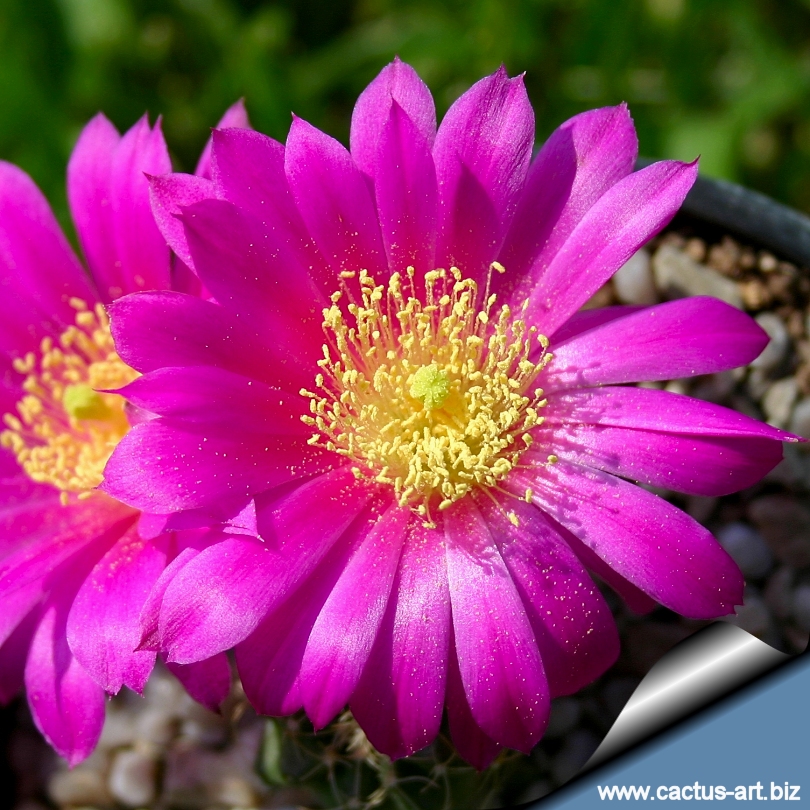
Flowers cover the plant
|
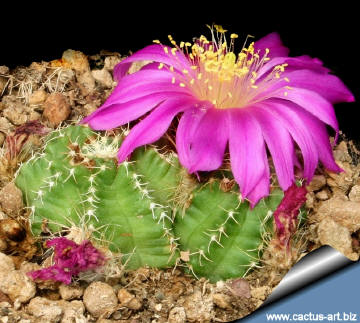
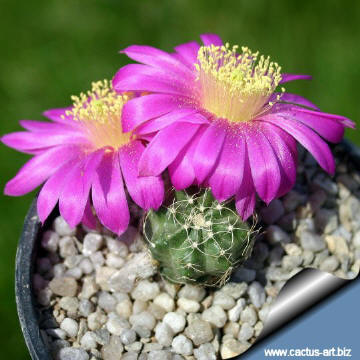 |
Description:
Habit: Generally slowly clumping
geophytic cacti. During drought time this species shrinks into the
ground.
Stems: Usually small 2-6 cm in diameter, 2-5 cm tall with 9 ribs.
Spines: 5 to 8 flailing hairlike spines.
Flowers: Magenta to cream-white, funnelform, on the sides at the
base of the stems, up to 8 cm in diameter.
Root: Tap rootCultivation: It has a strong tap root and should have a deep pot to
accommodate it. Needs porous well drained soil, water carefully, too much water will make it rot. Keep dry at minimum
temperature of 5° C in winter although will tolerate brief periods to -10
degrees. Sun Exposure: Full sun to light shade.
Propagation: It grow easily from seed or cutting (if
available)
Photo of conspecific
taxa, varieties of Echinocereus pulchellus.
- E. pulchellus ssp. pulchellus has stems that are
2,5-5 cm thick with 9 to 12 ribs and 3 to 7 inconspicuous spines per
areole. The flowers are pink or white.
- E.
pulchellus ssp. acanthosetus has stems that are 2 to 4cm
thick with 9 ribs usually and 5 to 8 flailing hairlike spines. The
flowers are magenta to white.
- E. pulchellus ssp. sharpii has darker colored
stems in comparison to the other subspecies that are 2 to 6cm thick
with 11 to 17 ribs and 7 to 14 spines per areole. The flowers are
magenta to white.
-
E. pulchellus ssp. weinbergii has stems that are 5
to 15 cm thick with 14 or 15 ribs and 8 to 11 spines per areole. The
pink diurnal flower petals are narrowly acute in shape.
-
E. pulchellus ssp. amoenus has 15 cm stems, 10 to 14 ribs
& on the young areoles it has 6 to 8 short spines with the lower spine
being the longest. The older areoles are devoid of spines. The flowers
are magenta.
Form & Cultivars:
|
|


Advertising
|
|
|
|
|
Family:
Cactaceae (Cactus
Family) |
| Scientific Name: Echinocereus
pulchellus ssp. acanthosetus (S.Arias & L.U.Guzmán)
N.P.Taylor1998 Origin: Mexico (Oaxaca): "Dto.
Coixtlahuaca, entre Magdalena Jicotlán y Tepelmeme de Morelos, Villa
Conservation status: Listed in
CITES appendix 2.
TL: Mexico, Oaxaca, between Magdalena Jicotlan & Tepelmeme de
Morelos, Arias, Guzman-Cruz & Gama 958, 29 Oct. 1991 (MEXU). |
Synonyms:
- Echinocereus pulchellus var. acanthosetus Arias &
Guzman
Published in:in Arias Montes et al. 1997
- Echinocereus pulchellus ssp. acanthosetus (Arias &
Guzman) Blum
Published in: Blum et al. 1998
- Echinocereus pulchellus var. amoenus (Dietrich)
Förster ex Schumann 1897
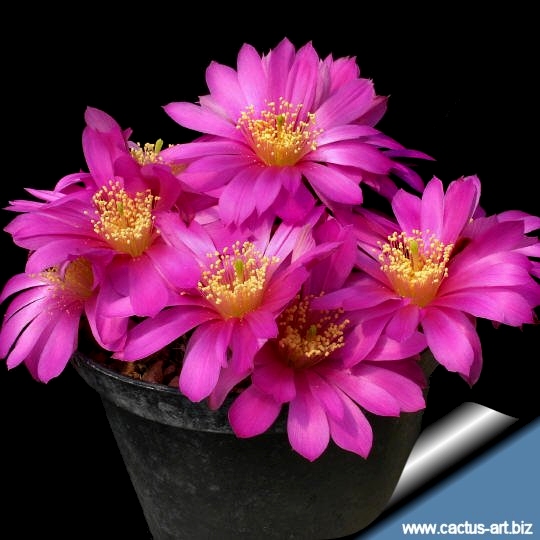
|
|
|
|
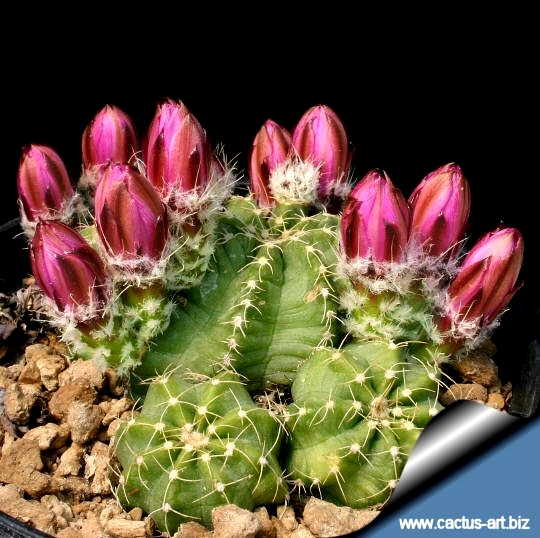
Buds
|
|